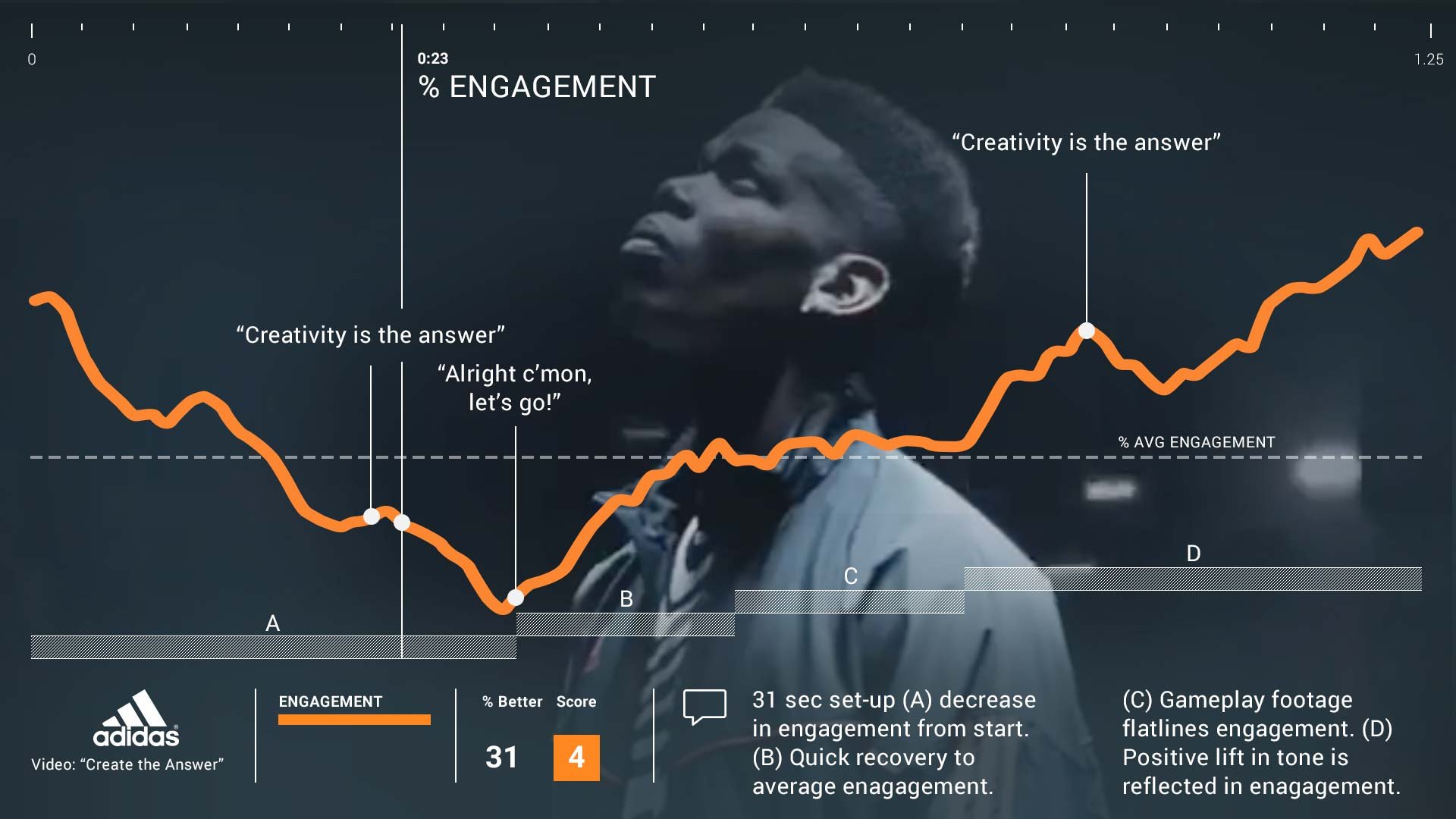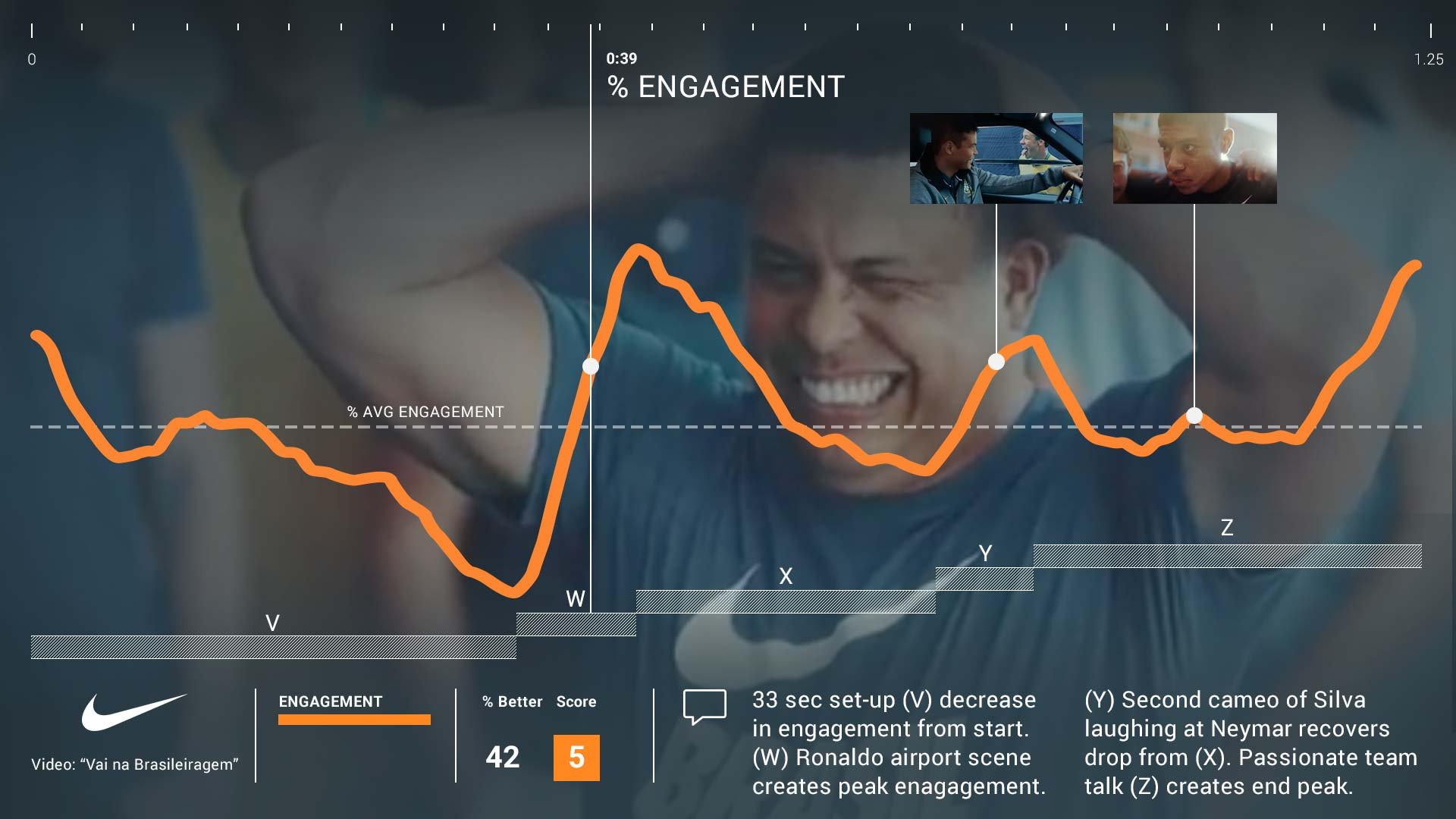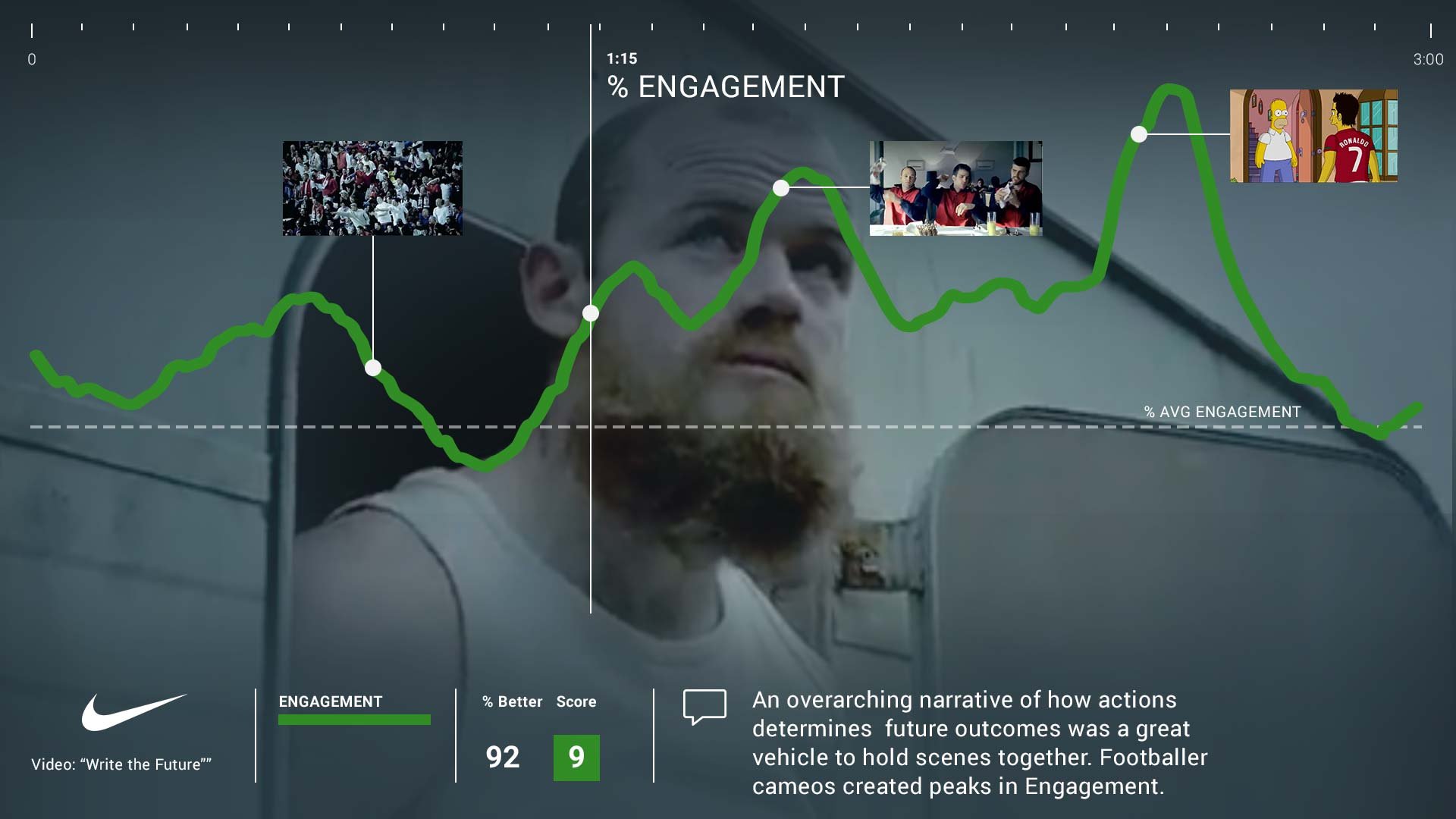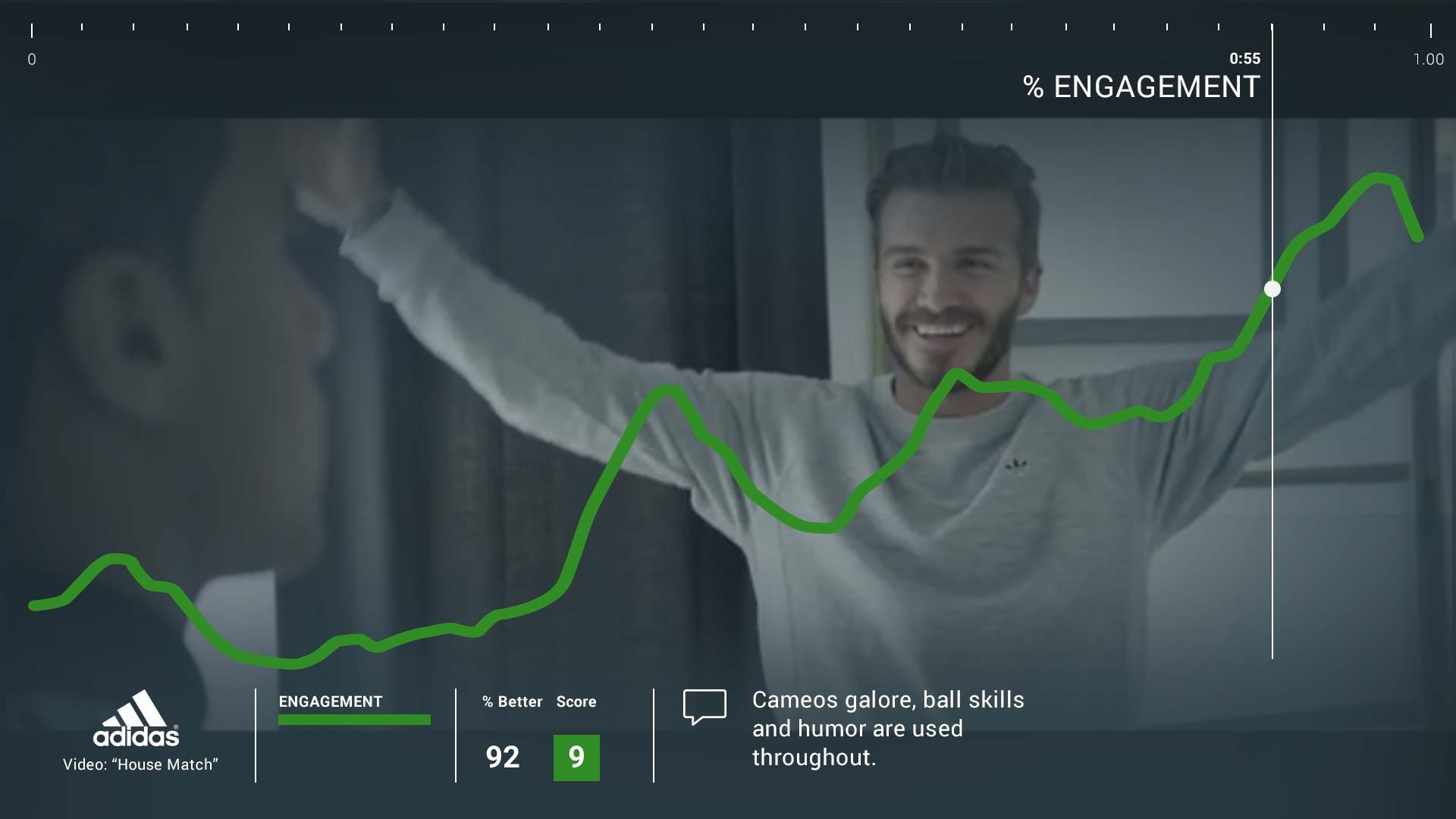
Nike Scores Early World Cup Engagement Victory Against Adidas

Colin Pye
The battle for the 2018 World Cup has not even started yet, but already Nike has scored one major victory over its sporting rival adidas.
Both brands recently released their World Cup ad campaigns, with Realeyes – a tech company that uses emotional AI software to help advertisers such as Coca-Cola and Mars maximise the impact of their video marketing – today releasing data which shows consumers find Nike’s Russia 2018 ad “Vai na Brasileiragem” more emotionally engaging than adidas’ spot, “Create the Answer”.
Nike’s commercial, which celebrates the 20th anniversary of Nike’s iconic “Airport” campaign, scored an overall ranking of 5 out of 10, 42% better than the thousands of ads tested by Realeyes.
That put it ahead of adidas’s campaign, a star-studded campaign featuring Lionel Messi, David Beckham and Jose Mourinho among many others, which scored 4 out of 10.
| RANK | BRAND | CAMPAIGN | YEAR | DURATION | % BETTER | SCORE |
| =1 | Nike | Write the Future | 2010 | 02:48 | 92 | 9/10 |
| =1 | adidas | House Match | 2014 | 01:00 | 92 | 9/10 |
| 3 | Nike | The Last Game | 2014 | 05:00 | 91 | 9/10 |
| 4 | Nike | My Time Is Now | 2012 | 02:00 | 85 | 8/10 |
| 5 | Nike | Winner Stays On | 2014 | 03:44 | 75 | 7/10 |
| 6 | Nike | The Switch | 2016 | 06:00 | 72 | 7/10 |
| 7 | adidas | Unfollow ft. Leon Messi | 2015 | 01:00 | 59 | 6/10 |
| 8 | adidas | Create Your Own Game | 2016 | 01:33 | 54 | 6/10 |
| 9 | adidas | Gareth Bale | 2016 | 00:55 | 52 | 6/10 |
| 10 | adidas | The Wake Up Call | 2014 | 02:49 | 43 | 5/10 |
| 11 | Nike | Vai na Brasileiragem | 2018 | 01:37 | 42 | 5/10 |
| 12 | adidas | Create the Answer | 2018 | 01:30 | 31 | 4/10 |
Realeyes’ AI tech uses webcams to measure how people feel as they watch video content online, enabling brands, agencies and media companies to optimise their content and help target their videos at the right audience. Nike’s ad scored higher than its sporting rival’s campaign after generating bigger spikes in emotional engagement, particularly the scene referencing the iconic 1998 ad with former Brazilian striker Ronaldo.
The ad was particularly popular with under 29-year-olds, who gave the ad an overall score of 6 out of 10.
The ad is also likely to boost the company’s brand and business metrics, with 48% of viewers saying they would be more likely to buy Nike’s products after watching the ad and more than half (52.7%) saying the video left them with a more favourable view of the brand.
Realeyes’ data suggests adidas’ ad is also likely to have an impact on the brand’s bottom line, with 51% of viewers more favourable to the brand and 47.7% more likely to buy adidas products. Adidas’ ad also scored slightly higher with female audiences (5 out of 10).
However, while Nike’s ad scored higher than its rival this year, viewers found the content a lot less engaging than previous Nike and adidas campaigns. As well as testing this year’s ads, Realeyes also looked at the 12 most popular adidas and Nike ads from earlier World Cups and European Championships, ranking them based on their overall emotional scores.
Unlike this year’s submissions, the overall prize was shared between the two brands, with Nike’s 2010 World Cup ad “Write the Future” and adidas’ 2014 campaign “House Match” sharing the top prize. Both campaigns scored 9 out of 10 - better than 92% of the thousands of ads ever tested by Realeyes. Nike’s 2014 animated campaign “The Last Game”, in third place, also scored 9 out of 10, but overall engagement was slightly lower (91% better). This year’s Nike and adidas submissions finished at the bottom of the chart, at 11th and 12th respectively.
Realeyes CEO and co-founder Mihkel Jäätma said: “The battle for the World Cup is just as fierce off the field as on it. It stirs up a lot of passion among viewers all around the globe – and the brands which can harness this raw emotion the most effectively are the ones that will be celebrat-ing come the end of the tournament.
“Our data shows that Nike already have an edge over adidas, creating an ad that was more likely to get pulses racing. But neither really have really caught the imagination of consumers, with emotional engagement lower than in previous years.
“One possible reason for that is the way the ads have been put together. Our data shows that montages, particularly ones with fast edits, are less likely to emotionally engage audiences.”
Methodology
Realeyes used its emotional facial recognition technology to test the most shared World Cup and European Championship campaigns created by adidas and Nike (based on YouTube and Facebook data).
Ad rankings are based on individual adverts’ EmotionAll® scores – a 1 to 10 performance score which compares videos’ emotional performance across our entire database of over 12,256 previously-tested videos. This EmotionAll® score – a composite of Attraction, Retention, Engagement and Impact - can be segmented by age, gender or other metrics such as income. Altogether 3,600 participants took part in the study. Data was compiled on June 6, 2018.




